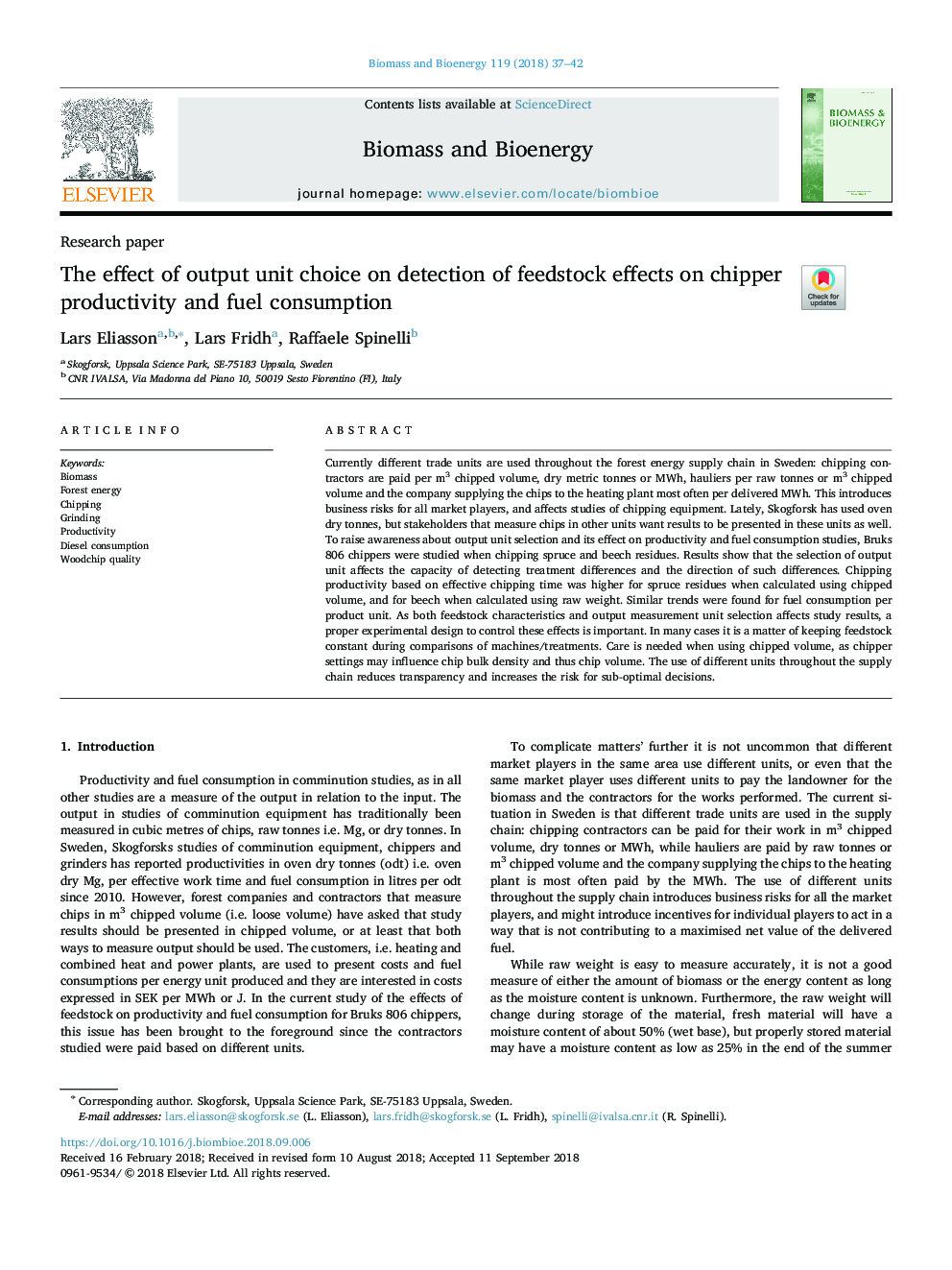| Article ID | Journal | Published Year | Pages | File Type |
|---|---|---|---|---|
| 10152084 | Biomass and Bioenergy | 2018 | 6 Pages |
Abstract
Currently different trade units are used throughout the forest energy supply chain in Sweden: chipping contractors are paid per m3 chipped volume, dry metric tonnes or MWh, hauliers per raw tonnes or m3 chipped volume and the company supplying the chips to the heating plant most often per delivered MWh. This introduces business risks for all market players, and affects studies of chipping equipment. Lately, Skogforsk has used oven dry tonnes, but stakeholders that measure chips in other units want results to be presented in these units as well. To raise awareness about output unit selection and its effect on productivity and fuel consumption studies, Bruks 806 chippers were studied when chipping spruce and beech residues. Results show that the selection of output unit affects the capacity of detecting treatment differences and the direction of such differences. Chipping productivity based on effective chipping time was higher for spruce residues when calculated using chipped volume, and for beech when calculated using raw weight. Similar trends were found for fuel consumption per product unit. As both feedstock characteristics and output measurement unit selection affects study results, a proper experimental design to control these effects is important. In many cases it is a matter of keeping feedstock constant during comparisons of machines/treatments. Care is needed when using chipped volume, as chipper settings may influence chip bulk density and thus chip volume. The use of different units throughout the supply chain reduces transparency and increases the risk for sub-optimal decisions.
Related Topics
Physical Sciences and Engineering
Chemical Engineering
Process Chemistry and Technology
Authors
Lars Eliasson, Lars Fridh, Raffaele Spinelli,
